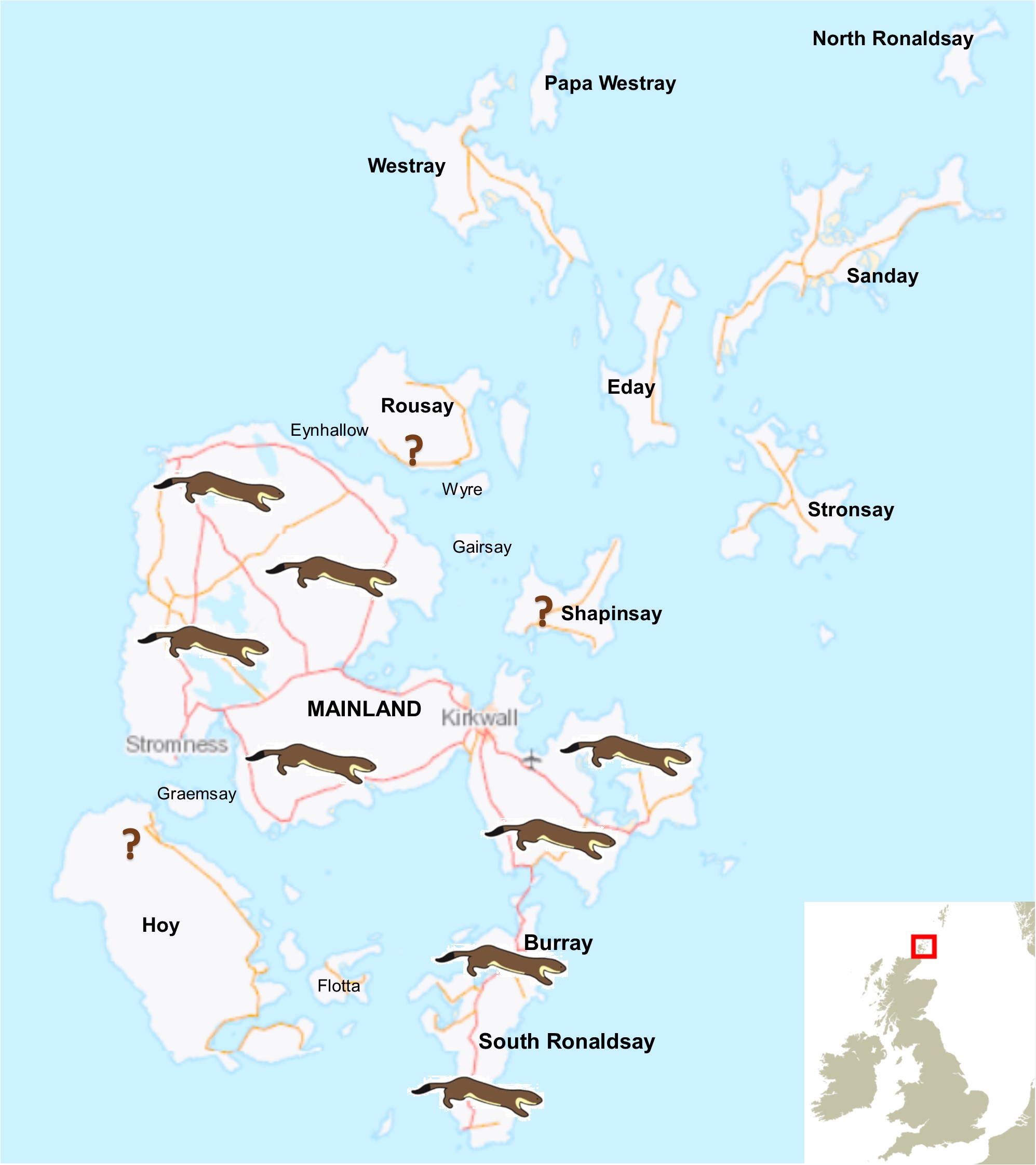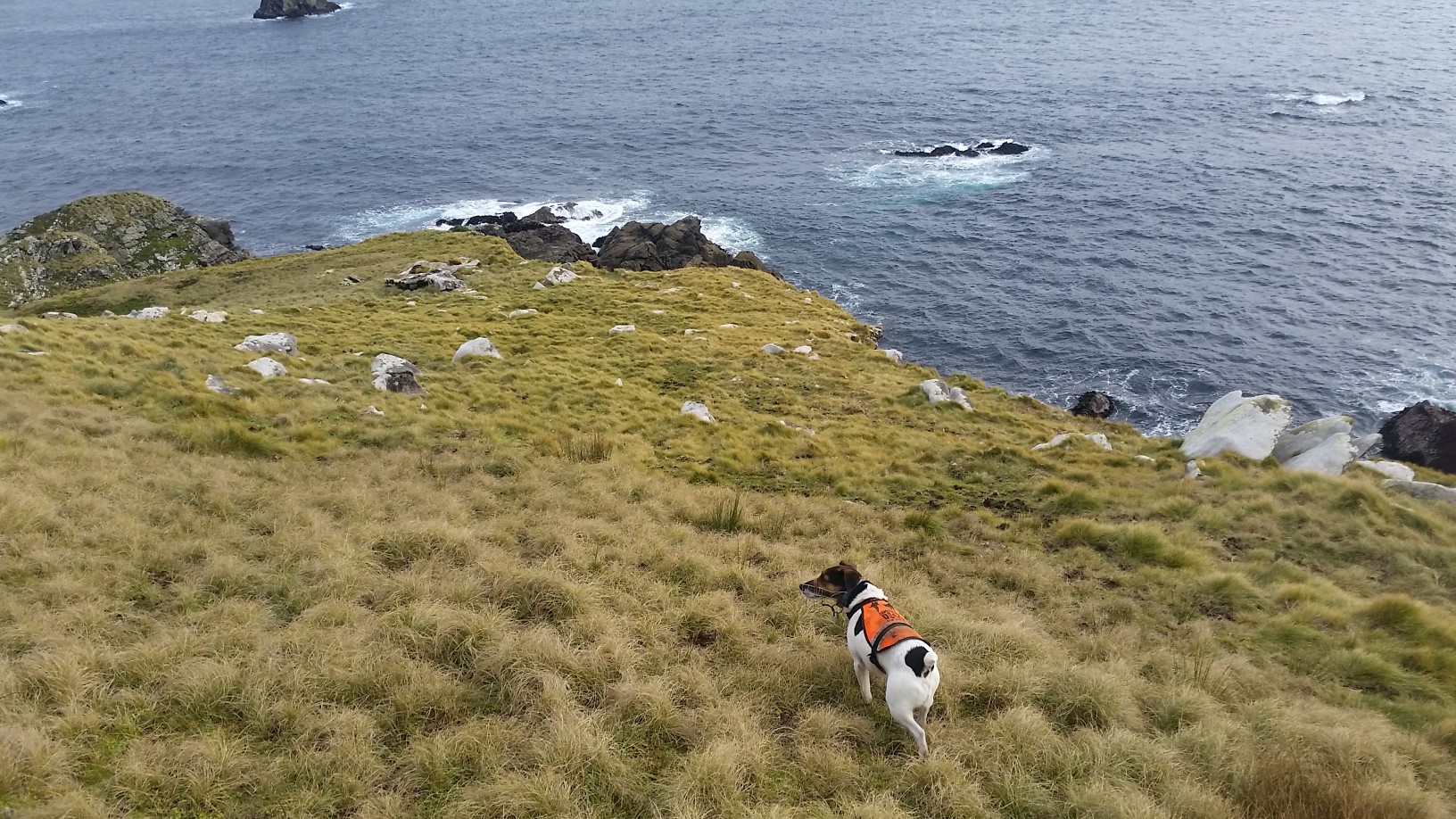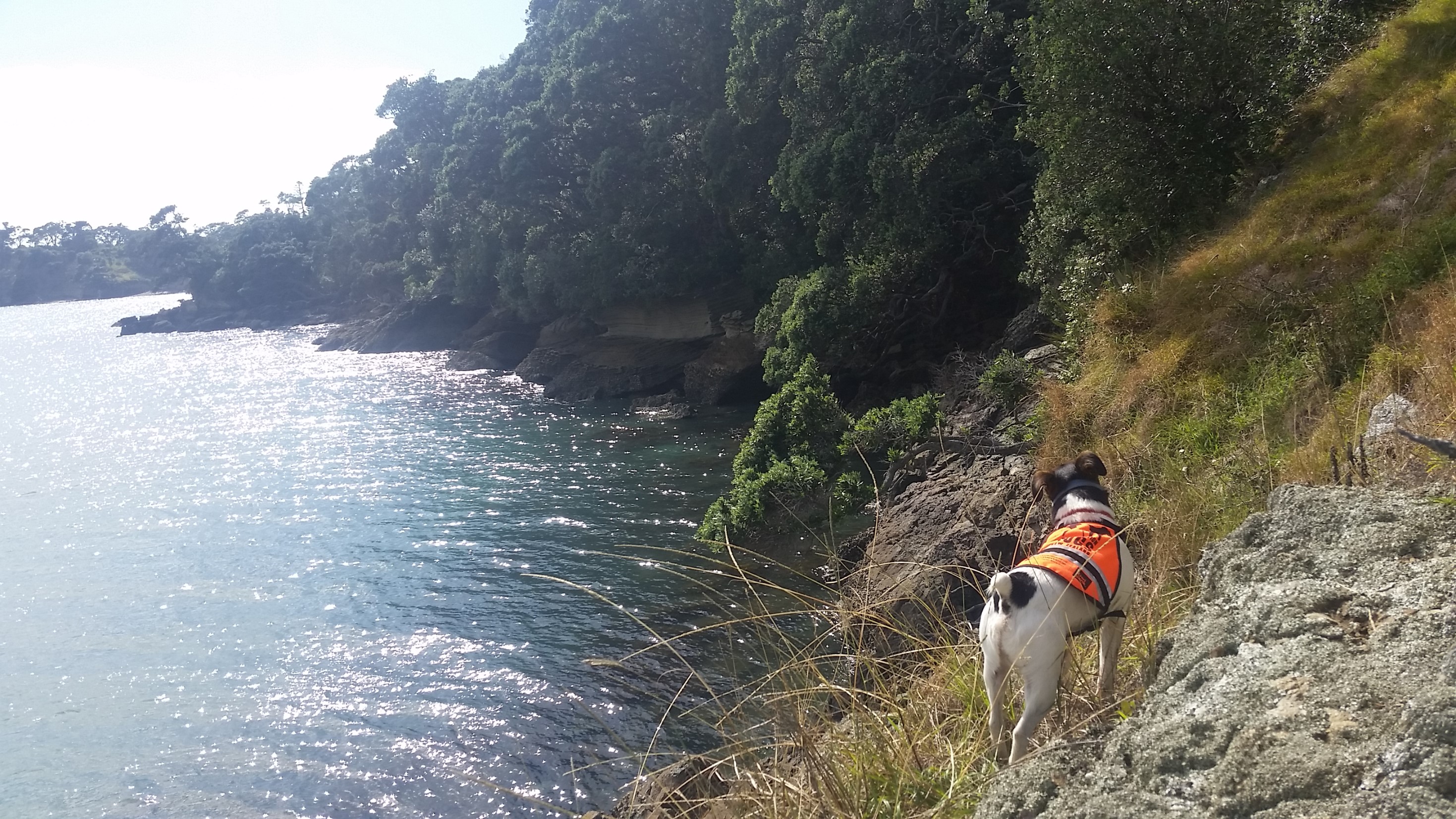Press release from RSPB and SNH

The Orkney Native Wildlife Project, which is a partnership between Scottish Natural Heritage (SNH) and RSPB Scotland, aims to protect Orkney’s native wildlife by removing stoats, an invasive non-native predator that was first recorded in Orkney in 2010.
Stoats are native to the UK Mainland but not to Orkney, where they pose a very serious threat to Orkney’s native wildlife particularly the Orkney vole, hen harrier, short-eared owl and other ground nesting birds such as red-throated divers, Arctic terns and curlews for which Orkney is internationally important and upon which Orkney’s thriving wildlife tourism industry relies.
Macca is a conservation detection dog and is specially trained to detect signs of stoats. He is the newest member of the Orkney Native Wildlife Project team and, along with handler Angela, has an important role to play in helping preparations ahead of the start of the programme to remove stoats from Orkney. Their job, for the next three months, is to systematically search for signs of stoat presence on high-risk islands around Orkney’s main island (Orkney Mainland).
Since 2010, stoats have spread and established across Orkney Mainland and four islands that are linked to the Mainland by road bridges including Burray and South Ronaldsay. There have also been a handful of sightings reported on other non-linked islands including Hoy and, most recently, Shapinsay. Traps and motion-activated cameras have been used to try to determine whether stoats are present on these other islands following possible sightings. However, the presence or absence of stoats on all “high-risk” islands must be determined before the eradication programme to remove stoats can commence.

Stoats are notoriously difficult to detect particularly when they are at low densities. Therefore, the only way to be certain that stoats are not present is to use specially-trained conservation detection dogs, like Macca, to systematically search for signs and the scent of stoats.
Plans are in place to train six conservation detection dogs as part of the Orkney Native Wildlife Project, but, because they take years of training, Macca has been brought in from New Zealand to help with the critical task of confirming the presence or absence of stoats on islands that are at high-risk from stoat invasion.
High-risk islands are those that are within a swimmable distance of islands where stoats are established. Stoats can swim considerable distances (at least 3 km) over open water and there are many smaller islands that they could use as stepping stones.
Like other detection dogs, Macca has been rigorously trained to the highest standards similar to those used to train drug or “sniffer” dogs. The difference is that Macca is trained to identify all signs and the scent of stoats and to indicate this to his expert handler – in this case Angela Newport.
Ange, is a dog handler with 10 years’ experience and she has worked with Macca for three and a half years. She said, ‘Macca is a working dog that has been specifically trained to detect stoats – their sign and scent – and alert me to their presence. Although he is not really a pet, he is definitely part of my family. We have a very strong bond, which is integral to the success of our work, and we also enjoy our free time together too. He has a colleague back home, my rodent detection dog, and as a working team, they understand who’s turn it is when I head off to work with one or the other of them. When it’s our down time, he enjoys a good romp on the beach at home, saying hi to the other beach dogs out there, and running after sticks in the surf. We are here in Orkney to do what we do best; seek out the sign or scent of stoat presence, particularly on the islands surrounding Mainland Orkney. Mac loves his job and is surely happy to be here, and he does have a rather Scottish sounding name, which hopefully puts him in good stead for making friends.‘.
Being trained to simply target the signs and smell of stoats, means that Macca (and other detection dogs like him) will not attempt to catch any stoats or react to the presence of other species or livestock. No stoats will be harmed by Macca or Ange, whose sole job is to determine presence or hopefully absence of stoats from other islands. Macca will be under full control, wear a muzzle and be identifiable by a special vest or harness at all times. If landowners require it, he can be kept on a leash at all times.
As part of their time on Orkney, both Macca and Ange be meeting Orcadians in Kirkwall on Friday 3 August. Meet and greet events are also planned for all the islands where they will be working. As there are currently no stoat conservation detection dogs in the UK, the Orkney Native Wildlife Project is keen that people find out more about the important role dogs like Macca play in conservation across the world as well as specifically what will be happening in Orkney between now and October.
Speaking on behalf of the Orkney Native Wildlife Project, Sarah Sankey said, ‘We’d firstly like to thank all the landowners in Orkney who are assisting with making these essential checks for stoats possible but we also want to welcome Macca and Ange. Checking the high-risk islands for stoats is a key step in developing a successful operation to eradicate stoats in Orkney and protect our world-renowned and internationally important native wildlife. Orkney’s wildlife is such an important part of what make these islands special and is ingrained in our culture and our history. We want to ensure that, together, we can safeguard its future‘.

ENDS
[registration_form]
A great post. The presence of stoats in Orkney is very concerning. I arrived last night in Stromness and have just woken up looking out on the sea 5m away. The ferry is just passing. Wonderful. I hope the project gets fully under way soon. It sounds like something I could volunteer for, if there are not enough local volunteers.
So hunting with dogs can have a place in conservation?
giles – did you read the piece?
If any one is interested in following news from the project, you can find them on Facebook at http://www.facebook.com/orkneynativewildlifeproject
Kirsty – thank you.
No, and if you’d bothered to read the article you would see that the dog isn’t used to hunt and/or kill the stoats, only to detect where they might be present.
Hope the project is ultimately successful, however surely there also need to be bio-security measures put in place to stop them (or other species) returning.